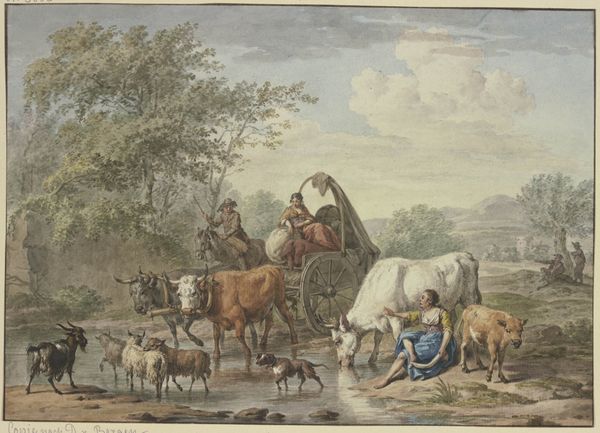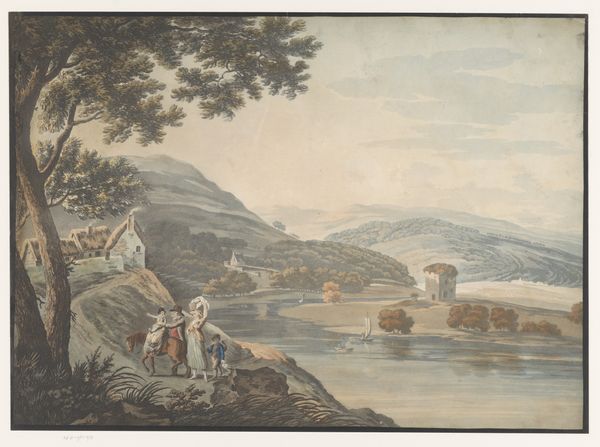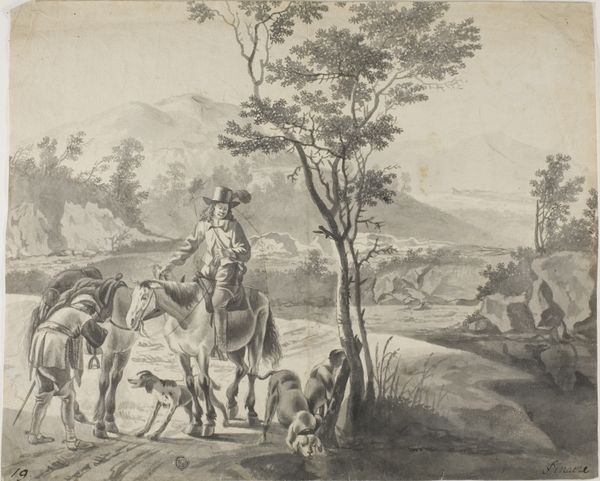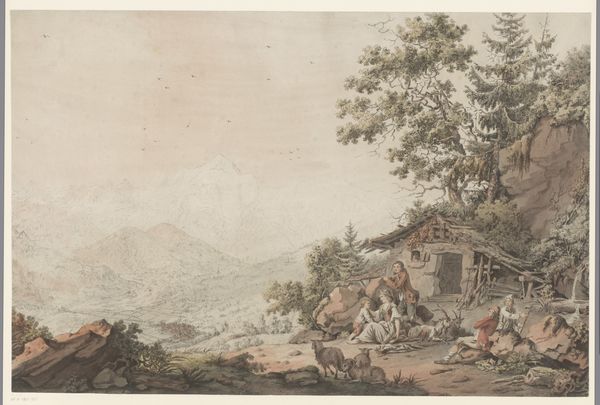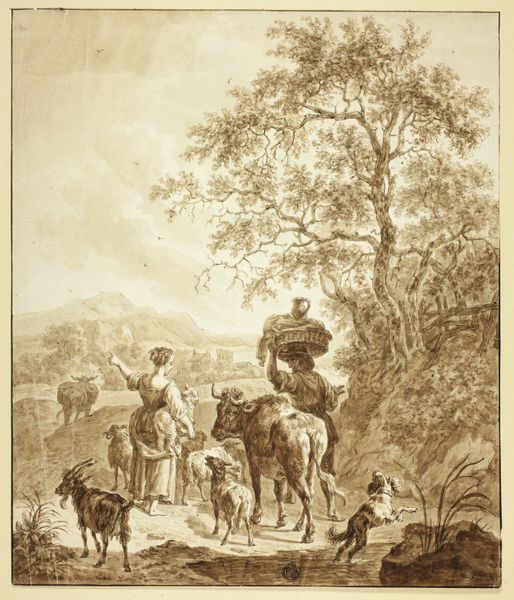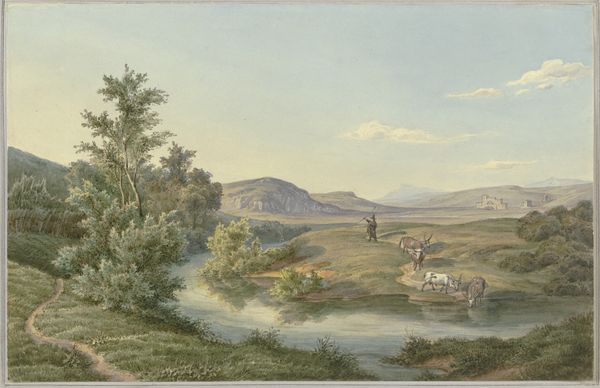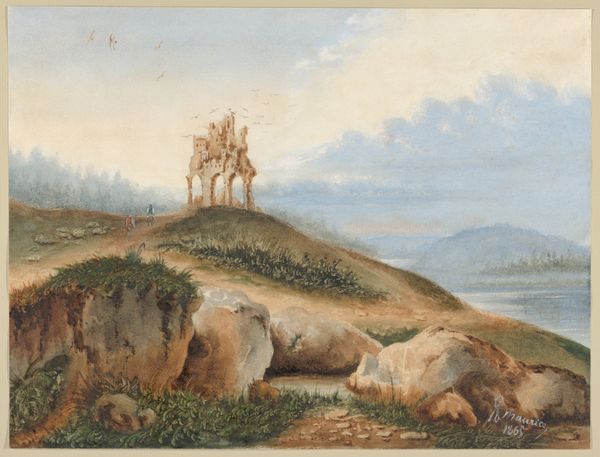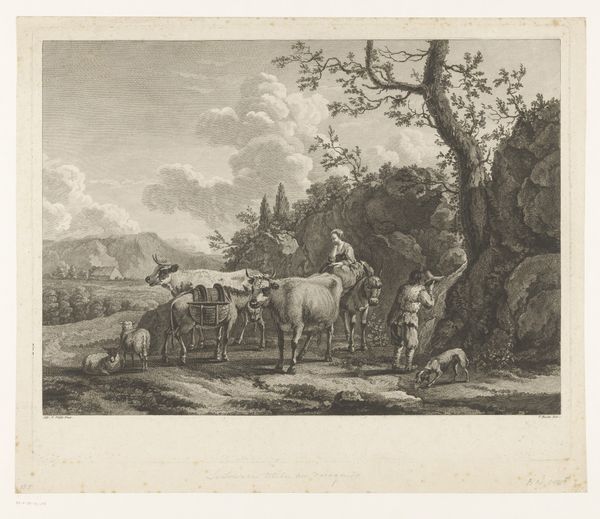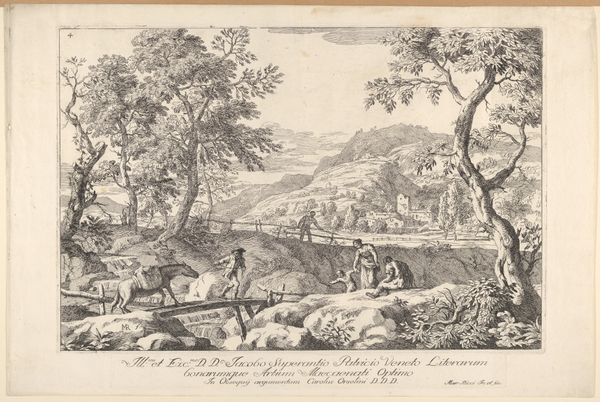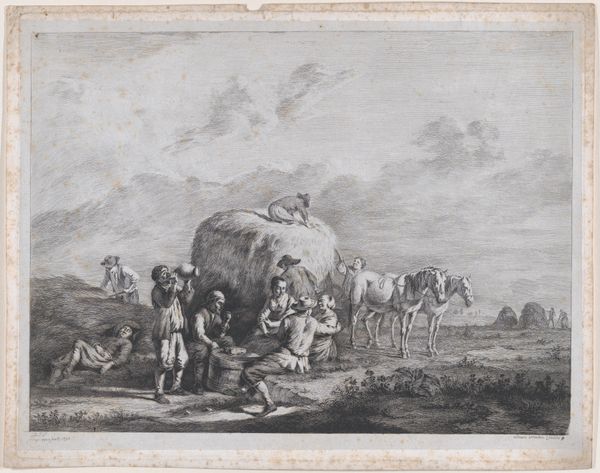
Hirten treiben Kühe durch ein Wasser, links trägt eine Frau ihr Kind auf dem Rücken, rechs reitet eine andere auf einem Esel
0:00
0:00
drawing, painting, watercolor
#
drawing
#
baroque
#
painting
#
landscape
#
figuration
#
watercolor
#
genre-painting
#
watercolor
Copyright: Public Domain
Editor: This watercolour painting by Aert Schouman depicts herders moving cattle through water, with a woman carrying a child on her back and another riding a donkey. I’m immediately struck by how it captures everyday life. What can you tell us about how Schouman represents labor and materials here? Curator: Let’s consider how the very act of depicting this scene elevates the everyday labour of these figures into something worthy of artistic attention. Think about the pigments he chose for the water – a mix of blues and browns - and how they reflect not just the physical properties of the river, but also the specific environmental impact of the livestock crossing. Is the water muddy? If so, what can it say about the production and maintenance of this type of agricultural labor? Editor: So you are saying the painting draws attention to how the landscape itself is actively shaped by human and animal labor? Curator: Exactly. Notice the woman carrying a child on her back as she wades through the water; she’s not some romantic ideal of motherhood, but someone actively engaged in the day-to-day work required to sustain a family. Similarly, observe the various textures achieved with watercolor: the rough coat of the cattle compared to the smoother garments of the riders. How might Schouman's skillful use of a 'craft' like watercolour contribute to breaking down conventional academic barriers between high art and representations of manual toil? Editor: It's interesting how the choice of watercolour, typically viewed as less ‘serious’ than oil, can be interpreted as a deliberate commentary on the value placed on different forms of artistic and physical labour. Curator: Precisely! And consider how this genre painting would have been received and consumed. What type of buyer would invest in such artwork that depicted herders moving cattle? Editor: I hadn't thought about it that way. I was so focused on the people depicted. It really shifts my perspective to consider not just what is shown, but how and for whom it was made. Curator: Art doesn’t exist in a vacuum. This conversation makes it easier to analyze an artwork, not as an isolated aesthetic object but as a product deeply intertwined with its social and economic context.
Comments
No comments
Be the first to comment and join the conversation on the ultimate creative platform.
